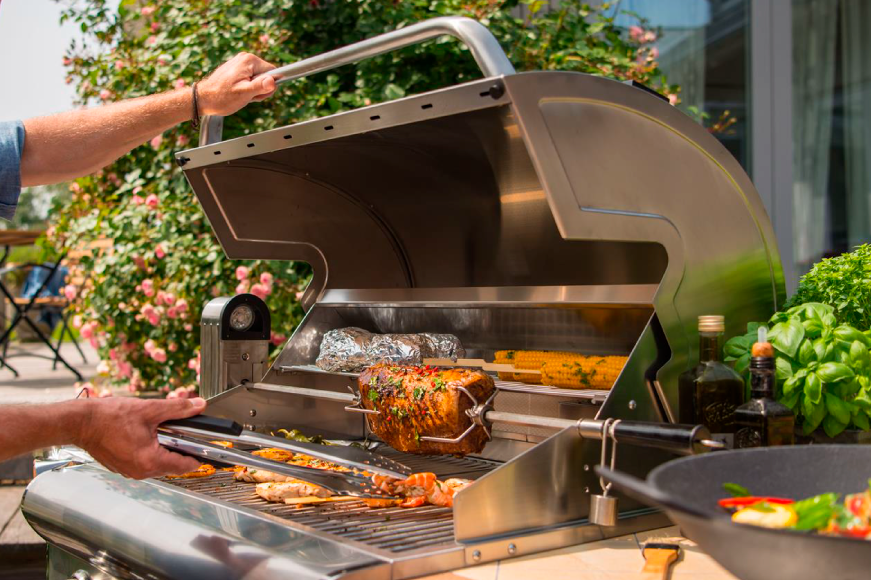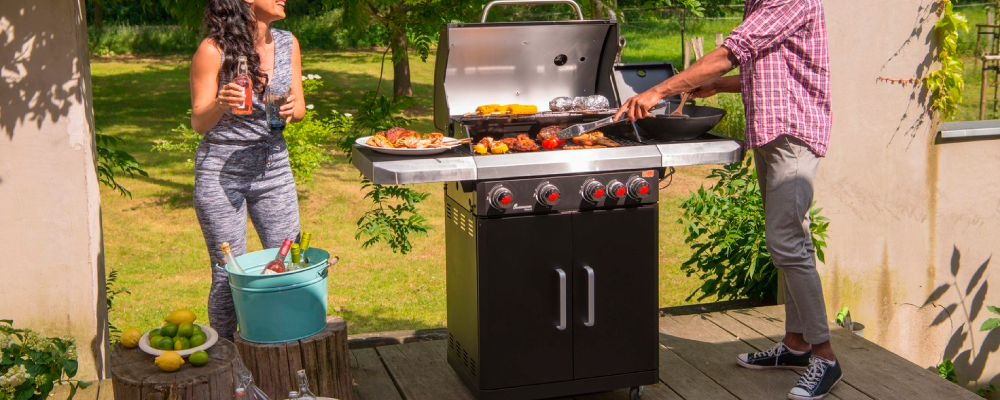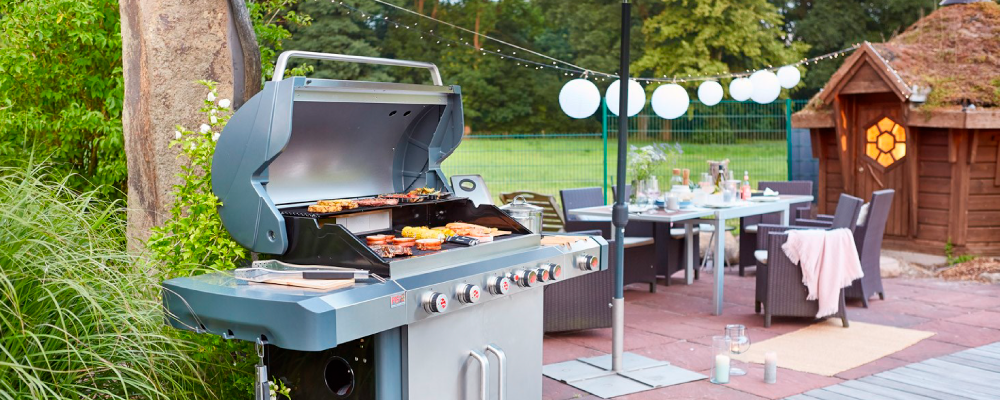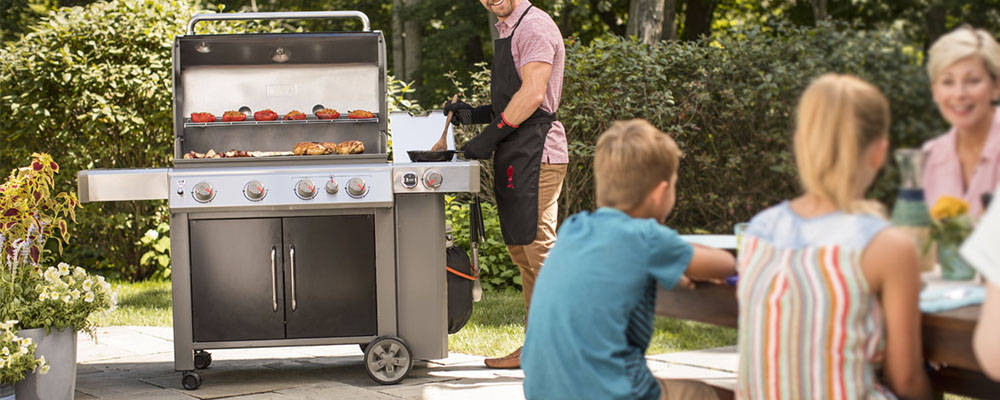
Ever since the first man skewered a haunch of mammoth and cooked it over an open fire, we’ve had a fondness for cooking food outdoors. It doesn’t matter that we have fully-equipped indoor kitchens, open-air cooking offers an allure that a microwave doesn’t. But when it comes time to buy a new grill the options are endless. There are a wide variety of grills, from simple charcoal grills that are little more than a way to contain the hot charcoal and a grate to hold the food, all the way up to high-end gas grills with side burners, rotisseries, and smoker functions.
To some people, barbecue is just broiling or roasting meat over some form of fire. But, to most barbecue enthusiasts this would sound blasphemous. The act of barbecuing involves finding the correct type and cut of meat, followed by getting the perfect marinade or rub and the perfect sauce to get the perfectly barbecued piece of meat. But, before we proceed to select the meat, marinade and sauces, we must choose the right barbecue grill to ensure everything turns out fine.

What Is the Best Type of Grill for Me? There is no one size fits all when it comes to grills. Gas grills offer ease and convenience. You just turn the gas on, press the igniter and you are ready to start cooking up some hot dogs. You can set the temperature more accurately then dealing with charcoal. But these grills don't get as nice of a char or smokey flavor as their charcoal or wood counterparts. These grills operate on either propane or natural gas, and some are convertible from one to the other. Propane grills use refillable tanks for their fuel supply, which you'll have to buy at a hardware or grocery store while natural gas grills are connected to a permanent gas outlet. Why gas? Convenience. You don’t need to spend an hour waiting for coals to get hot. Today’s gas grills heat up so fast, you can start cooking within minutes.
Simply put, a gas grill is a grill that cooks food using gas. Most gas grills use liquid propane gas from a tank that’s hooked right up to the grill. (However, it’s possible to connect some grills to the same fuel tank that powers your kitchen range or even to a gas line that runs to your house.) The beauty of a gas grill is that it’s easy to “light” and only takes about 10 minutes until it’s hot enough for you to throw on some burgers. And when you’re finished, you simply turn off the gas — you don’t have to wait for the coals to die down and then carefully dispose of them.

Additionally, gas grills are easier to control. You turn the heat up or down by turning a knob just as you do on your stove. Some diehard grillers claim you don’t get the same smoky flavor that you get from cooking over charcoal, but for many, the payoff in convenience is worth it — especially for weeknight grillers. If you want to grill with a minimum amount of fuss and effort, you will want a gas model. Let’s take a deeper look. A good gas grill will set you back a lot more than a charcoal one. While you can get what’s widely considered the best charcoal grill for just $165, one of the best gas grills will set you back around $1,000. Of course, there are models you can get for just a few hundred bucks, but those tend to be on the smaller side, don’t have as many burners, and might not last you as long as a sturdier, more expensive model.
There are lots of gas grills out there. We've included absolute top pick below, but first, here are some shopping pointers, in case you want to do your own comparison shopping. Here’s what to look for when buying a gas grill.
Construction - check that the grill is built of heavy metal. Stainless steel is durable and attractive, but doesn’t hold in heat as well as cast aluminum and is harder to keep looking spiffy than porcelain enamel on steel. Avoid a grill with sharp edges or gaps where edges meet.
Burners - the more burners, the greater the number of hungry guests you can feed at once. More burners also give you flexibility so that if you’re grilling, let’s say, steaks and chicken at the same time, you can cook each over a different heat setting. Look for burners made of stainless steel or bronze, which are more durable than aluminum and won’t rust like cast iron.
Wheels - at least two wheels on a grill make it easy to move it around on the patio or into storage at the end of the season.
A removable grease tray -after every cookout, you want to be able to easily dispose of any grease that dripped down. Many use disposable aluminum pans that you can just toss and replace.
Little extras - any little extra you can get is going to be nice to have. For example, side tables give you a spot to rest your spatula or a tray of burgers. If you have a side burner, you can keep a pan of barbecue sauce or baked beans simmering. Tool hooks give you a place to hang your tongs, brush, and even a bottle opener. Although built-in thermometers and fuel gauges are not super accurate, they do give you a general idea how hot it is under the lid and how much gas is left in the tank.
By following our advice, you will make your grilling process easier. Our site, as always, can offer you all the necessary inventory.
Sincerely,
"Domino"
Recent posts
- Tools for your yard: what you absolutely need
- როგორ შევარჩიოთ უნიტაზი - რჩევები და ტენდენციები
- Top Tools for Every Household
- რა უნდა ვიცოდეთ ნიჟარის შერჩევის დროს
- როგორ შევარჩიოთ შესაფერისი პლინტუსი იატაკისთვის
- იატაკის საფარის გადაბმა - რჩევები საუკეთესო გადაწყვეტილებისთვის
- ცივი, თბილი თუ ნეიტრალური - როგორ შევარჩიოთ განათება
- როგორ შევარჩიოთ ფილა სამზარეულოს წინსაფრისთვის
- საღებავი თუ შპალერი — როგორ შევარჩიოთ კედლის საფარი
- როგორ დავგეგმოთ პრაქტიკული და კომფორტული შემოსასვლელი










